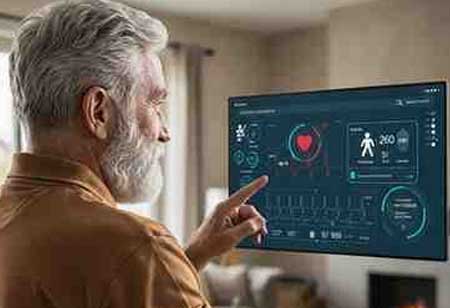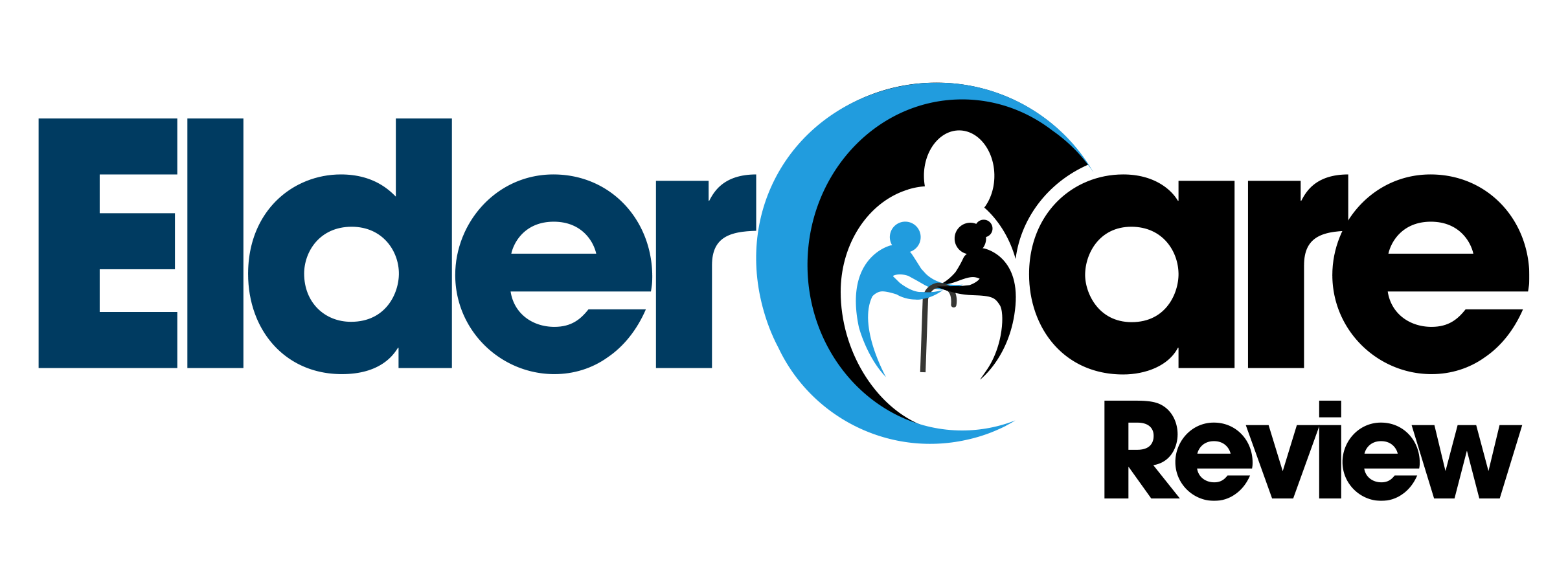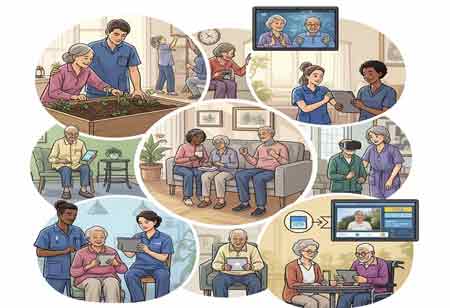Thank you for Subscribing to Eldercare Review Weekly Brief
Innovative Medical Alert Systems: Keeping Loved Ones Safe and Independent
The increasing need for senior care drives significant growth and innovation within the medical alert system sector.

By
Eldercare Review | Thursday, March 27, 2025
Stay ahead of the industry with exclusive feature stories on the top companies, expert insights and the latest news delivered straight to your inbox. Subscribe today.
The increasing need for senior care drives significant growth and innovation within the medical alert system sector. These systems, initially essential devices designed to offer emergency help at the touch of a button, have evolved into advanced, multifunctional tools that significantly improve the safety and autonomy of their users. Thanks to technological advancements like wearable devices, fall detection capabilities, GPS tracking, and enhanced connectivity, medical alert systems are now essential for improving the quality of life for elderly people and those managing chronic health issues.
Evolution of Medical Alert Technology: Beyond Basic Alerts
The realm of medical alert systems is evolving from simple alert buttons to sophisticated health-monitoring technologies. Contemporary medical alert systems now include various features that enhance their effectiveness in emergencies while taking a proactive approach to health management. Many systems are designed with fall detection sensors that can automatically alert caregivers or emergency services if a fall occurs, even when the user is unable to press the emergency button. This hands-free capability represents a significant improvement, mainly since falls are a primary source of injury for older adults.
Moreover, medical alert systems, including smartwatches and fitness trackers, are increasingly incorporated into wearable technology. In real-time, these gadgets track essential health metrics such as heart rate, blood pressure, and oxygen saturation, notifying users or their caregivers of any irregularities. This trend towards enhanced health monitoring enables individuals to preserve their independence while reassuring their families and caregivers.
The increasing adoption of smart home technology represents a significant advancement in the field. Numerous medical alert systems now work harmoniously with home automation tools, including bright lighting, thermostats, and security features, enhancing their overall capabilities. For instance, specific systems can identify when a user is inactive or unresponsive and automatically modify environmental settings to ensure their comfort and safety.
Addressing Challenges in Adoption and Usability
The progress made in medical alert systems is noteworthy; however, the industry continues encountering various obstacles. A significant challenge is the need for user-friendliness. Many seniors can find intricate technology daunting, making simplicity a crucial focus. Despite the range of features available in contemporary systems, manufacturers need to prioritize the development of devices that are straightforward and accessible, particularly for individuals who may lack technological expertise.
One significant hurdle is the expense associated with more sophisticated medical alert systems. Although basic models are affordable, the premium versions, including real-time health monitoring, GPS tracking, and home integration, can be excessively costly. This disparity in pricing creates an obstacle to broader acceptance, especially for elderly individuals on fixed incomes or those lacking sufficient insurance. Nevertheless, numerous companies are introducing flexible pricing options and subscription services, enabling users to enjoy advanced features at a reduced upfront cost, thereby enhancing the accessibility of these systems.
Connectivity challenges pose significant obstacles, particularly in rural regions where mobile networks and Wi-Fi may not be as dependable. A lack of stable connections can hinder the performance of these sophisticated systems, which could lead to delays in emergency response. It is essential to tackle these connectivity issues to guarantee that medical alert systems deliver consistent and reliable service across all settings.
Opportunities and Future Advancements
The prospects for medical alert systems are filled with potential for innovative advancements. With the rise of telemedicine and remote patient monitoring, these systems are anticipated to forge stronger connections with healthcare providers, facilitating the immediate exchange of essential health information. This integration would empower caregivers and medical professionals to track a user's health status consistently, enabling prompt interventions when necessary.
Furthermore, artificial intelligence and machine learning are set to improve the predictive functions of medical alert systems significantly. By examining trends in an individual's health information, these systems can foresee potential complications before they escalate into significant concerns. For instance, AI can detect anomalies in heart rate or blood pressure, alerting healthcare professionals to take preventive measures ahead of any critical developments. This forward-thinking strategy in health monitoring will enable more personalized and agile care, ultimately enhancing patient outcomes.
Incorporating 5G technology into medical alert systems represents a significant advancement. By providing faster and more dependable connectivity, 5G enables immediate communication among medical devices, caregivers, and emergency responders, which can significantly decrease response times. Additionally, this technology improves the efficiency of real-time health monitoring, facilitating quicker and more precise data transmission and fostering a more interconnected healthcare environment.
The increasing popularity of personalized health technology is poised to revolutionize the medical alert industry. Upcoming systems are likely to be customized to meet the distinct requirements of each user, utilizing individual health data to modify alerts and monitor specific health issues. For instance, these systems could be engineered to identify early indicators of diseases such as diabetes or heart disease, enabling timely interventions that may significantly enhance long-term health results.






